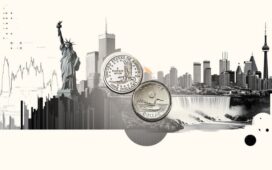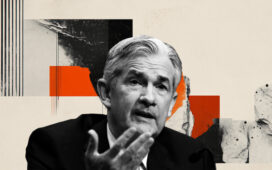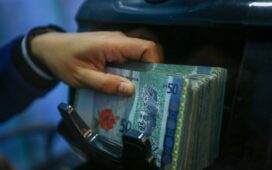- US Dollar Index receives support as the US PMI data may report growth in May’s business activity.
- The US House Rules Committee approved Trump’s sweeping tax-cut bill and set a full House floor vote within hours.
- Fed officials noted that a decline in consumer and corporate confidence is attributed to US trade policy changes.
The US Dollar Index (DXY), which tracks the US Dollar (USD) against a basket of six major currencies, holds gains after registering losses in the previous three successive sessions. During the early European hours on Thursday, the DXY is holding its position around 99.70, slightly above two-week lows.
Furthermore, traders await S&P Global US Purchasing Managers Index (PMI) data due on Thursday. The overall business activity is expected to expand at a steady pace in May, which could provide some support for the Greenback.
The House Rules Committee approved US President Donald Trump’s sweeping tax-cut bill. The US House Rules Committee stated that a full House floor vote on the Trump tax cut bill is set to take place within hours. The bill was supported by the Committee 8-4 vote after a long 22-hour session on Wednesday. Republican leaders set up two votes to begin debate and to pass the bill before sunrise on Thursday, per Reuters.
Cleveland Fed President Beth Hammack and San Francisco Fed President Mary C. Daly both voiced rising concerns about the US economy during a panel event organized by the Federal Reserve Bank of Atlanta. Although important economic indicators are still strong, both officials noted a decline in consumer and corporate confidence and partially blamed the change in opinion on US trade policies.
Moody’s downgraded the US credit rating from Aaa to Aa1 following similar downgrades by Fitch Ratings in 2023 and Standard & Poor’s in 2011. Moody’s now projects US federal debt to climb to around 134% of GDP by 2035, up from 98% in 2023, with the budget deficit expected to widen to nearly 9% of GDP. This deterioration is attributed to rising debt-servicing costs, expanding entitlement programs, and falling tax revenues.
US Dollar FAQs
The US Dollar (USD) is the official currency of the United States of America, and the ‘de facto’ currency of a significant number of other countries where it is found in circulation alongside local notes. It is the most heavily traded currency in the world, accounting for over 88% of all global foreign exchange turnover, or an average of $6.6 trillion in transactions per day, according to data from 2022.
Following the second world war, the USD took over from the British Pound as the world’s reserve currency. For most of its history, the US Dollar was backed by Gold, until the Bretton Woods Agreement in 1971 when the Gold Standard went away.
The most important single factor impacting on the value of the US Dollar is monetary policy, which is shaped by the Federal Reserve (Fed). The Fed has two mandates: to achieve price stability (control inflation) and foster full employment. Its primary tool to achieve these two goals is by adjusting interest rates.
When prices are rising too quickly and inflation is above the Fed’s 2% target, the Fed will raise rates, which helps the USD value. When inflation falls below 2% or the Unemployment Rate is too high, the Fed may lower interest rates, which weighs on the Greenback.
In extreme situations, the Federal Reserve can also print more Dollars and enact quantitative easing (QE). QE is the process by which the Fed substantially increases the flow of credit in a stuck financial system.
It is a non-standard policy measure used when credit has dried up because banks will not lend to each other (out of the fear of counterparty default). It is a last resort when simply lowering interest rates is unlikely to achieve the necessary result. It was the Fed’s weapon of choice to combat the credit crunch that occurred during the Great Financial Crisis in 2008. It involves the Fed printing more Dollars and using them to buy US government bonds predominantly from financial institutions. QE usually leads to a weaker US Dollar.
Quantitative tightening (QT) is the reverse process whereby the Federal Reserve stops buying bonds from financial institutions and does not reinvest the principal from the bonds it holds maturing in new purchases. It is usually positive for the US Dollar.





